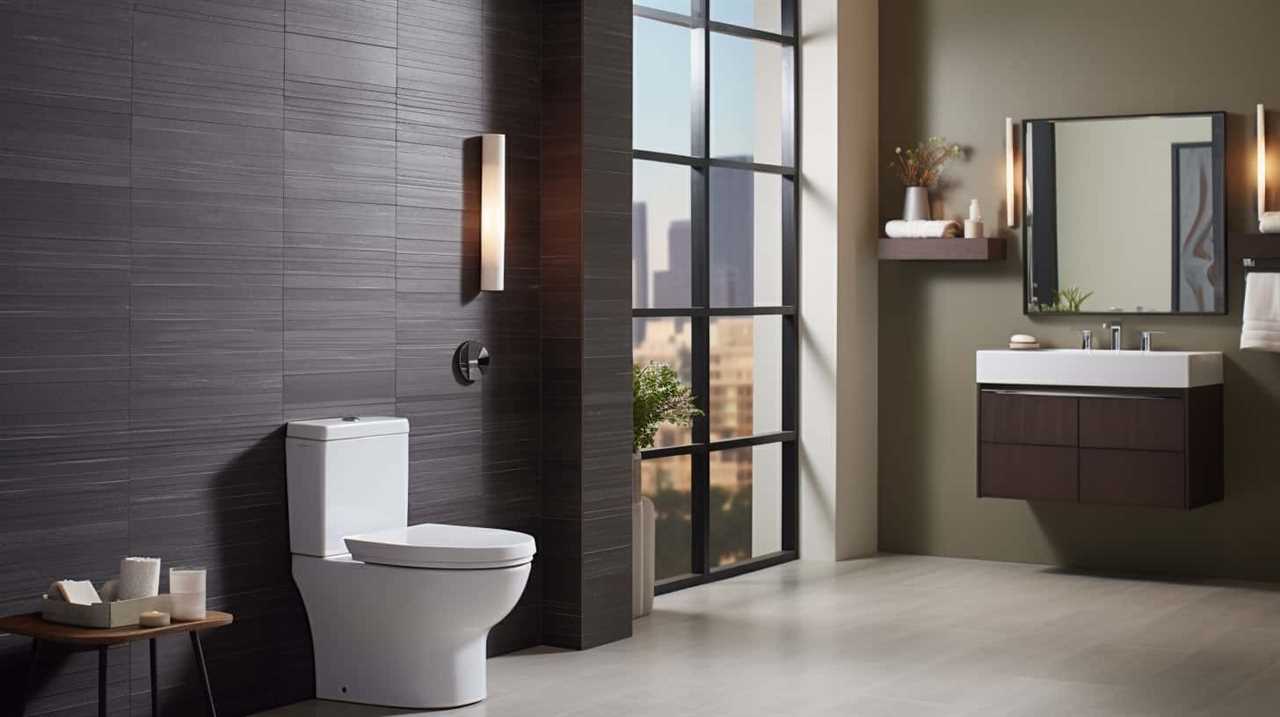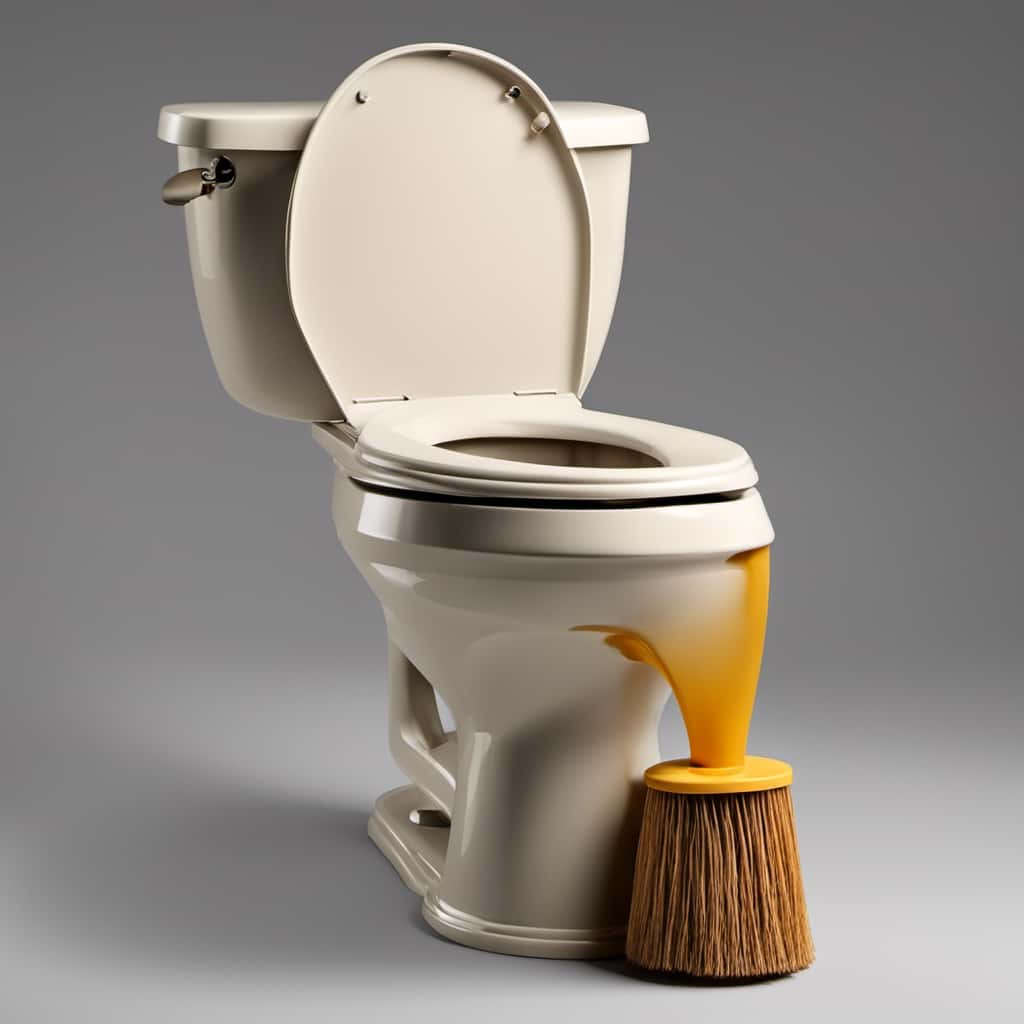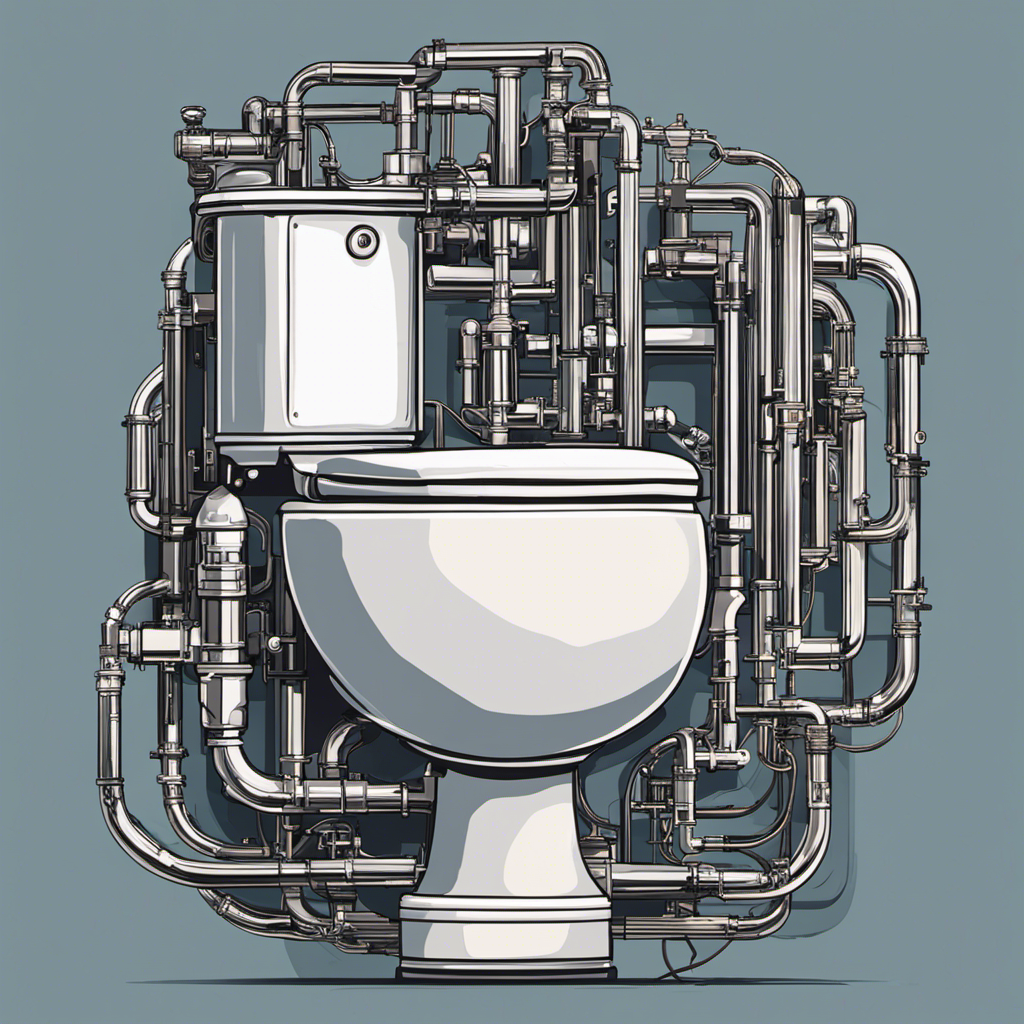Ladies and gentlemen, behold the simple yet powerful toilet tank. Just like a sentinel on duty, it faithfully holds the key to our comfort and convenience.
In this article, we, the experts, will unravel the mysteries that lie within. From the various types of toilet tanks to the common problems that plague them, we will guide you through troubleshooting and DIY repairs.
So, join us on this journey of mastery as we delve into the world of the toilet tank.
Key Takeaways
- Water-saving toilet tanks are environmentally conscious choices that minimize water usage through low-flow or dual-flush mechanisms.
- Decorative toilet tanks offer a variety of styles and designs to complement bathroom decor, ranging from sleek and modern to vintage-inspired options.
- Gravity-flush toilet tanks are common and reliable, using gravity to efficiently flush waste.
- Pressure-assist toilet tanks use compressed air to enhance flushing power, making them ideal for commercial or high-traffic areas.
Types of Toilet Tanks
When choosing a toilet, it’s important to consider the different types of toilet tanks available.
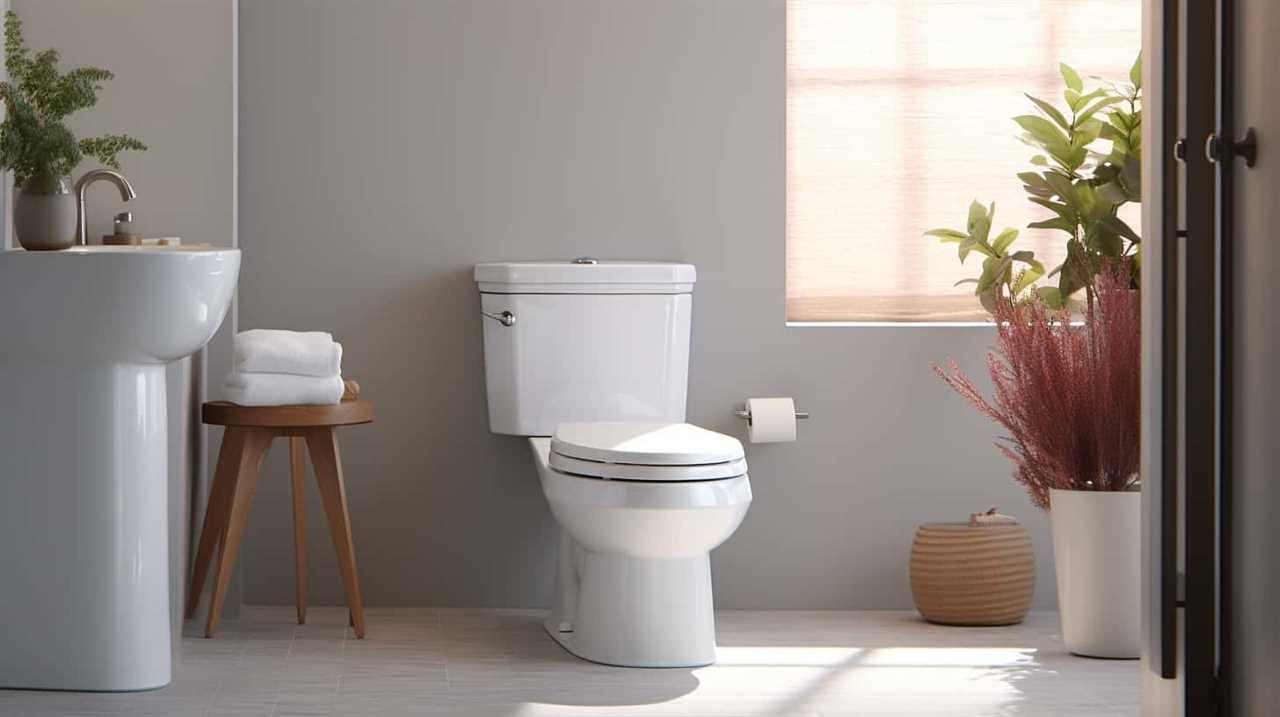
One option to consider is water-saving toilet tanks. These tanks are designed to minimize water usage by using low-flow or dual-flush mechanisms. They’re an excellent choice for those who are environmentally conscious and want to reduce their water consumption.
Another type of toilet tank to consider is decorative toilet tanks. These tanks come in a variety of styles and designs, allowing you to choose one that complements your bathroom decor. Whether you prefer a sleek and modern tank or a vintage-inspired one, decorative toilet tanks can add a touch of elegance to your bathroom.
Now that we’ve discussed the different types of toilet tanks available, let’s move on to the next section where we’ll address common toilet tank problems.
Common Toilet Tank Problems
Moving on to common toilet tank problems, let’s address some issues that can arise with these essential bathroom fixtures. Here are a few common problems you may encounter with your toilet tank:

- Toilet Tank Leaks: Leaks can occur due to worn-out flapper valves, faulty fill valves, or loose connections. To fix this problem, inspect the flapper valve for any signs of damage or wear and replace if necessary. Additionally, check the fill valve and tighten any loose connections.
- Water Condensation: If you notice water droplets forming on the outside of your toilet tank, it could be due to high humidity in your bathroom. To prevent condensation, consider using a tank liner or insulating the tank with foam insulation.
- Mineral Build-up: Over time, minerals and sediment can accumulate inside the toilet tank, affecting the flushing performance. To clean the tank, shut off the water supply, drain the tank, and use a toilet cleaner or vinegar to remove the build-up.
- Odor Issues: If you’re experiencing unpleasant odors coming from your toilet tank, it could be due to bacteria growth. Regularly cleaning the tank and using bleach or a tank deodorizer can help eliminate odors.
Troubleshooting Toilet Tank Issues
Now let’s delve into troubleshooting toilet tank issues and address potential problems that may arise with our toilets.
One common issue that homeowners may encounter is low toilet tank water pressure. If you notice that the water flow in your toilet tank is weak or inconsistent, there are a few possible causes.
- First, check the water supply valve to ensure it’s fully open.
- If the valve is open and the water pressure is still low, it could be due to a clogged or partially blocked fill valve or supply line.
Another common problem is a toilet tank leaking. Leaks can occur from various places, including the fill valve, flush valve, or tank bolts.
- Inspect these components for any signs of leakage and replace any faulty parts promptly to prevent water damage.
DIY Toilet Tank Repairs
Our first step in DIY toilet tank repairs is to assess the extent of the damage and gather the necessary tools and materials.

To effectively clean the toilet tank, follow these steps:
- Start by turning off the water supply to the toilet tank. Locate the shut-off valve usually located on the wall or floor behind the toilet.
- Flush the toilet to empty the tank completely.
- Remove the tank lid and inspect the components inside. Check for any cracks, leaks, or worn-out parts.
- Clean the tank using a mixture of warm water and mild detergent. Scrub the surfaces thoroughly, paying attention to any buildup or stains.
To adjust the water level in the toilet tank, follow these steps:
- Locate the float adjustment screw or rod near the fill valve.
- Turn the screw or adjust the rod to raise or lower the water level.
- Test the water level by flushing the toilet and observing the tank filling process.
Remember to always refer to your toilet’s manufacturer instructions for specific repair and maintenance guidelines.
Professional Toilet Tank Maintenance
To properly maintain the toilet tank, we recommend hiring a professional for regular inspections and maintenance. Professional toilet tank maintenance is crucial for ensuring optimal performance and longevity.
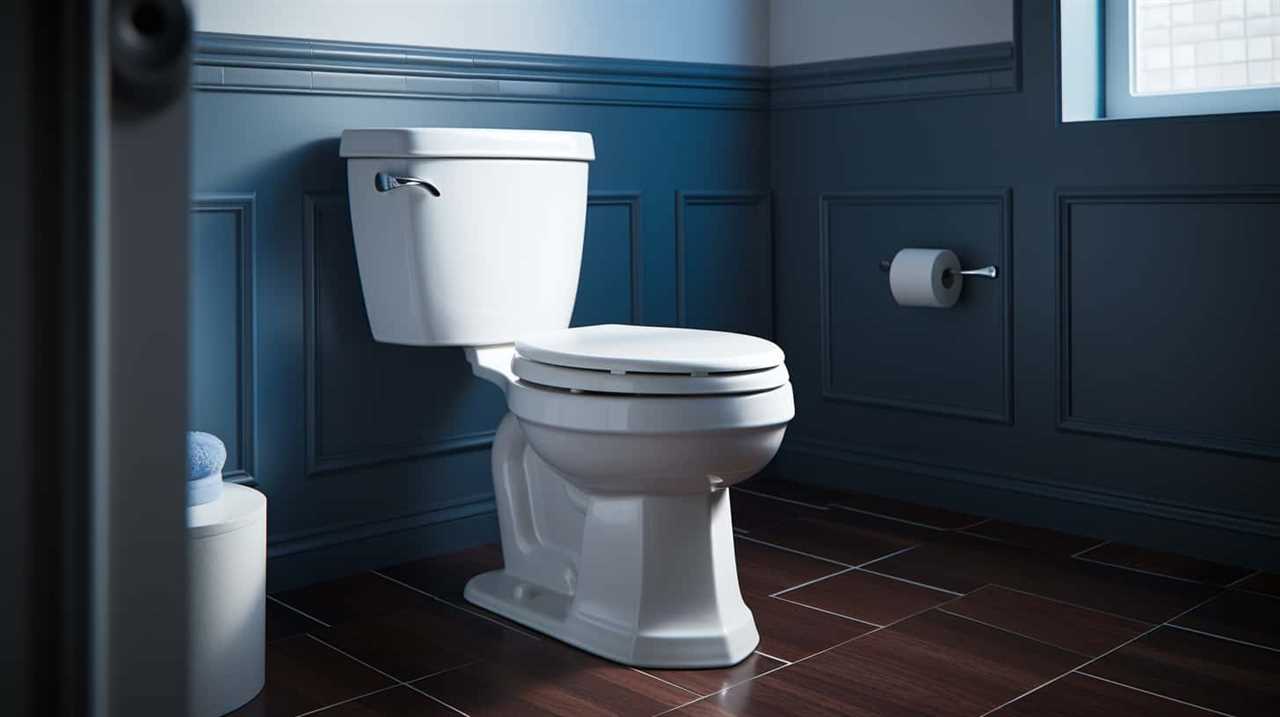
A skilled technician can effectively clean the tank, removing any buildup or debris that may affect its functionality. They’ll also check the water level in the tank and adjust it if necessary. Maintaining the correct water level is important to prevent issues such as constant running or incomplete flushing.
Additionally, a professional can inspect the tank’s components, such as the fill valve and flapper, to identify any potential problems and replace any worn-out parts.
Frequently Asked Questions
How Does a Toilet Tank Work?
Toilet tank maintenance is essential to ensure proper functioning. Troubleshooting common problems, such as leaks or running water, requires understanding how a toilet tank works. Regular inspection and maintenance can prevent costly repairs.
What Are the Benefits of Using a Dual-Flush Toilet Tank?
Using a dual-flush toilet tank can lead to significant water conservation. On average, a dual-flush system saves up to 68% more water compared to traditional toilets. This results in both environmental benefits and cost savings.

Are There Any Eco-Friendly Toilet Tank Options Available?
There are eco-friendly toilet tank options available that utilize water-saving technology and are made from sustainable materials. These tanks are designed to reduce water consumption and promote environmental sustainability.
Can a Toilet Tank Be Customized to Match the Bathroom Decor?
Customizing a toilet tank to match bathroom decor is possible through various toilet tank color options and DIY decoration ideas. By incorporating personal style, the toilet tank can become a unique and aesthetically pleasing feature in the bathroom.
What Is the Average Lifespan of a Toilet Tank?
The average lifespan of a toilet tank depends on various factors, such as the quality of materials used and the level of maintenance. Regular cleaning and inspection can extend its longevity.
Conclusion
In conclusion, toilet tank troubles can be tackled with DIY repairs or professional maintenance. By troubleshooting common problems and addressing them promptly, you can ensure a smooth functioning toilet.

Remember to choose the right type of tank for your bathroom needs, and keep an eye out for any signs of leaks or other issues.
With proper care and attention, your toilet tank can remain in tiptop shape, providing you with a trouble-free bathroom experience.
